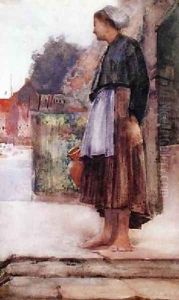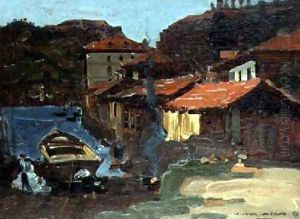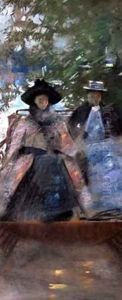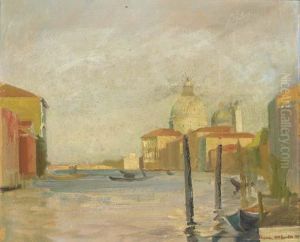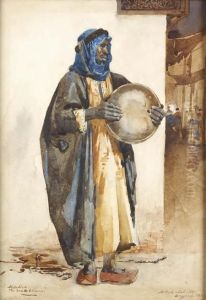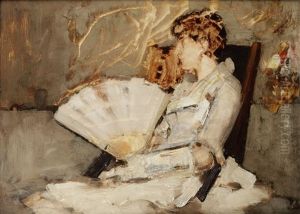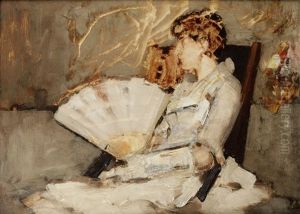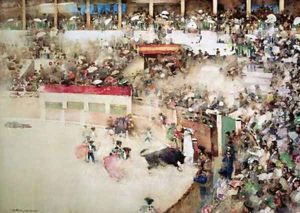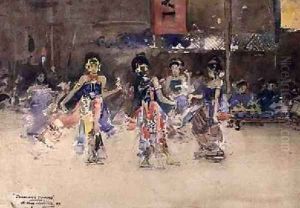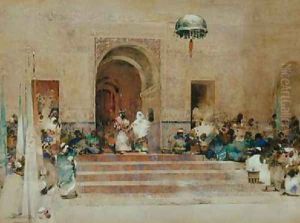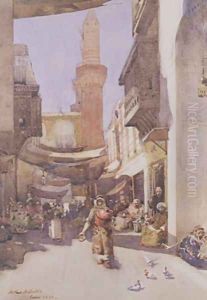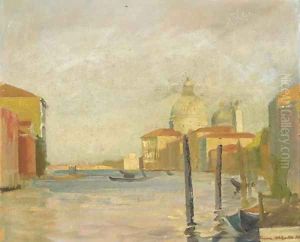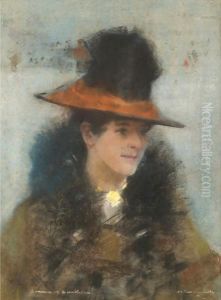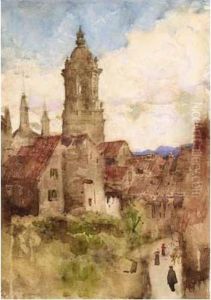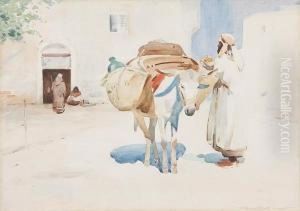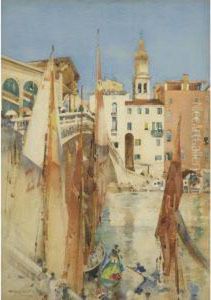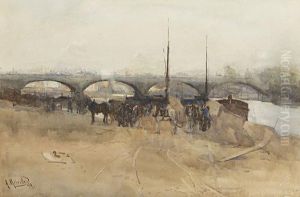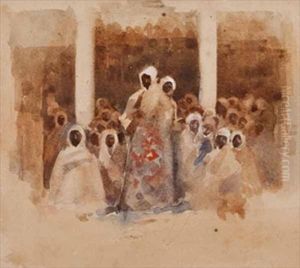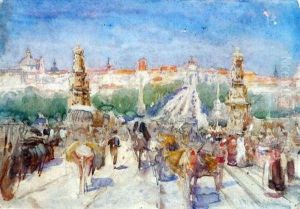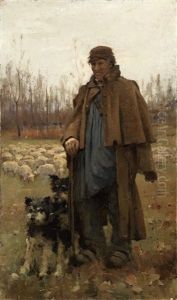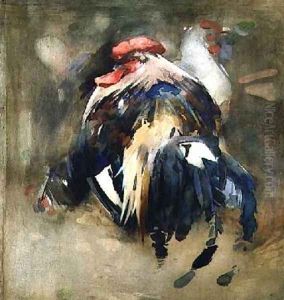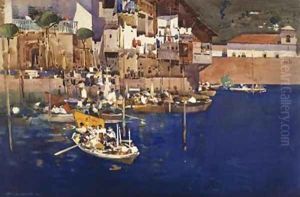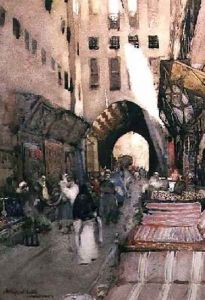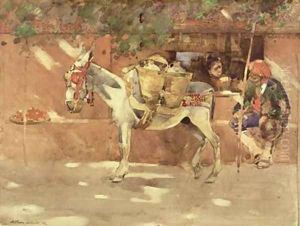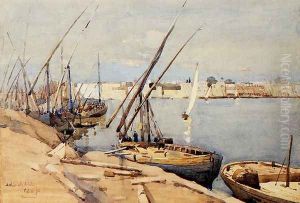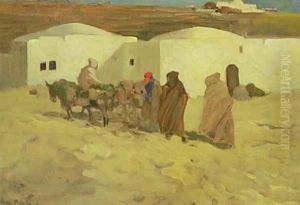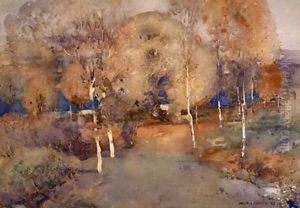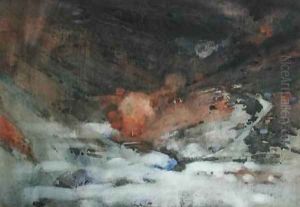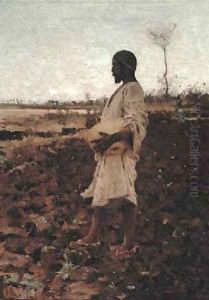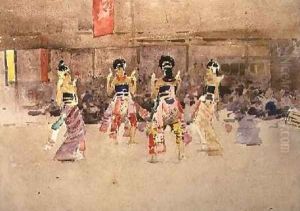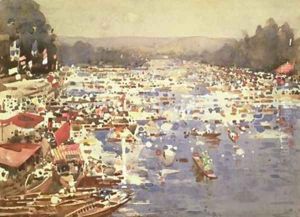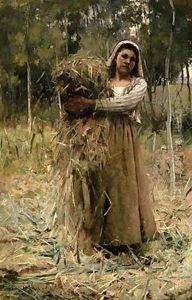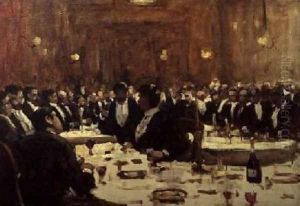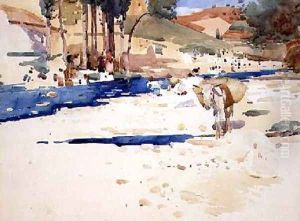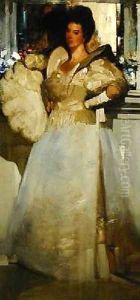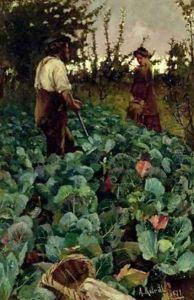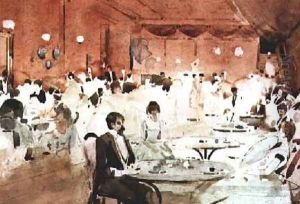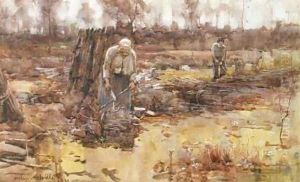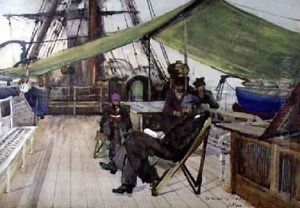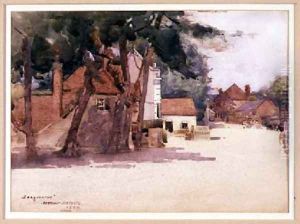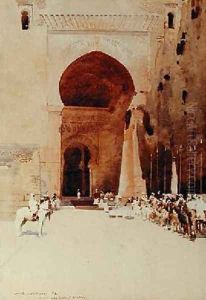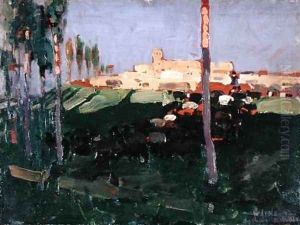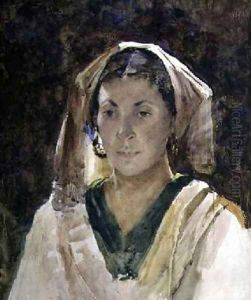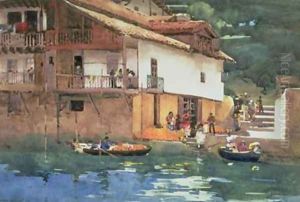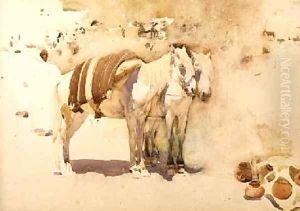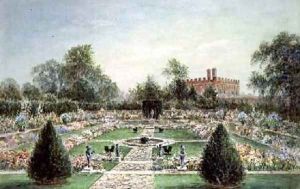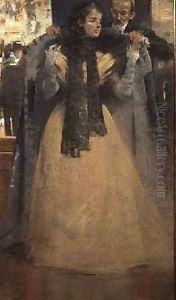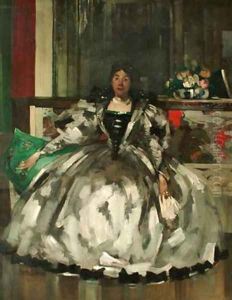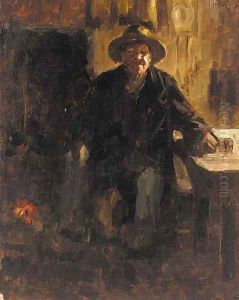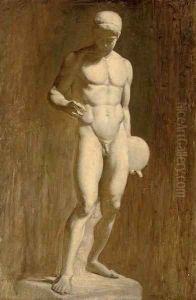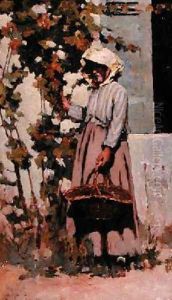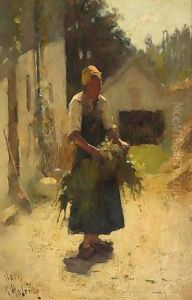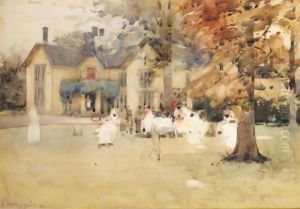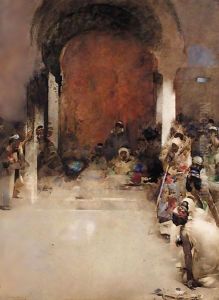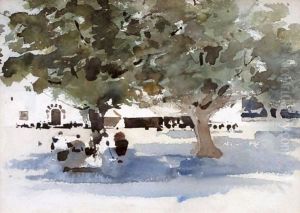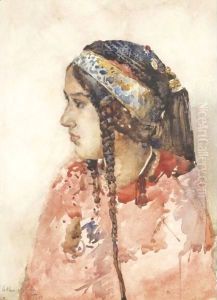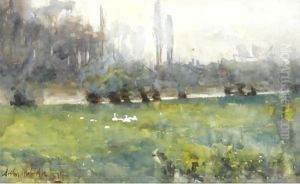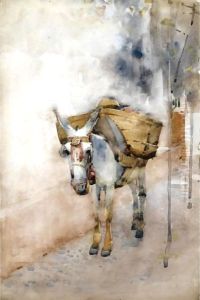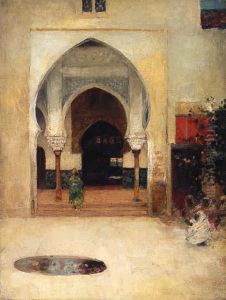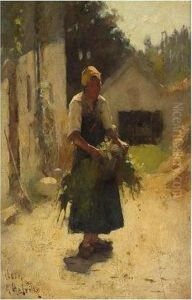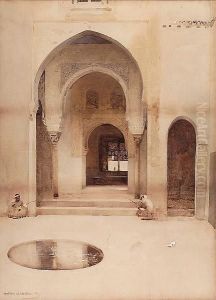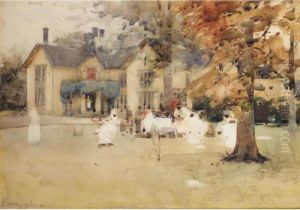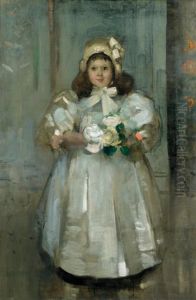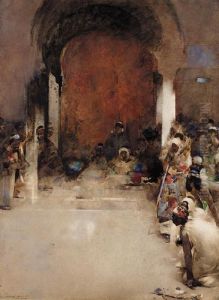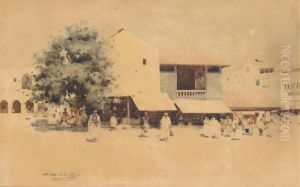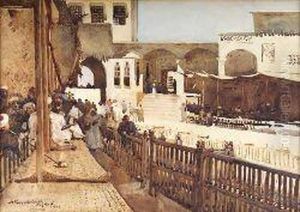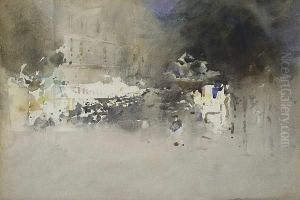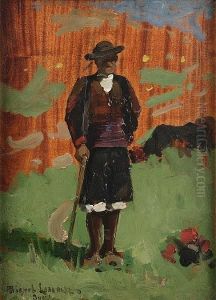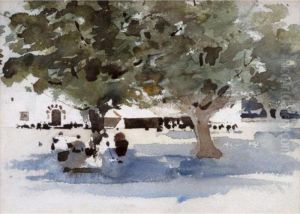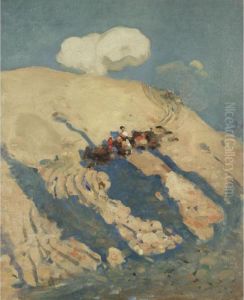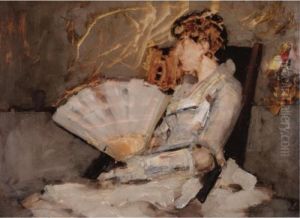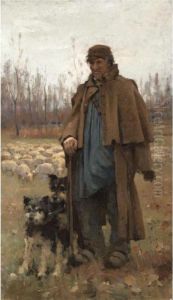Arthur Melville Paintings
Arthur Melville was a Scottish painter known for his involvement in the Glasgow Boys group and for his innovative techniques in watercolor and oil. Born on April 10, 1855, in Loanhead of Guthrie, near Arbroath, Angus, Scotland, Melville displayed a talent for art at a young age. He studied at the Edinburgh Academy of Fine Arts and later at the Royal Scottish Academy, where he developed his skills in watercolor and oil painting.
Melville traveled extensively throughout his career, which greatly influenced his artistic style. His journeys took him to places like Egypt, Persia (now Iran), Spain, and Morocco. The vibrant colors and light of the Middle East, in particular, had a profound impact on his work. He often incorporated luminous washes and a loose, expressive style that set him apart from his contemporaries. His travels provided him with a plethora of subjects, from exotic landscapes to scenes of everyday life in distant cultures.
In the 1880s, Melville became associated with the Glasgow Boys, a group of young artists who aimed to break away from the traditional academic painting prevalent in Scotland at the time. They were influenced by the naturalism of the French plein-air painters and were determined to bring a more realistic and immediate approach to Scottish art. Melville's contributions to the group were significant, particularly in his use of color and light, which added a distinctive vibrancy to their collective work.
Despite being known primarily for his watercolors, Melville also produced a number of significant oil paintings. His technique often involved applying thin glazes of oil paint to achieve a watercolor-like effect, a method that was ahead of its time and showcased his innovative approach to the medium.
Tragically, Melville's career was cut short when he contracted typhoid fever, leading to his premature death on October 5, 1904, at the age of 49. Nevertheless, his influence on Scottish painting and his role in the Glasgow Boys ensured that his legacy endured well beyond his lifetime. Today, Arthur Melville is celebrated for his unique style and his contributions to the development of modern Scottish art. His works are held in many public collections, including the National Galleries of Scotland and the Kelvingrove Art Gallery and Museum in Glasgow.
